To become a wildlife conservation UAV pilot, you'll need to master five key steps. First, gain essential UAV piloting skills through practice and training. Next, study wildlife biology fundamentals to understand the species you'll be working with. Then, focus on mastering conservation-specific flight techniques for tasks like population counts and habitat mapping. Don't forget to acquire necessary certifications, including the FAA Part 107 Remote Pilot Certificate. Finally, join conservation drone projects to gain hands-on experience and network with professionals in the field. By following these steps, you'll be well on your way to an exciting career combining technology and environmental protection.
Gain UAV Piloting Skills
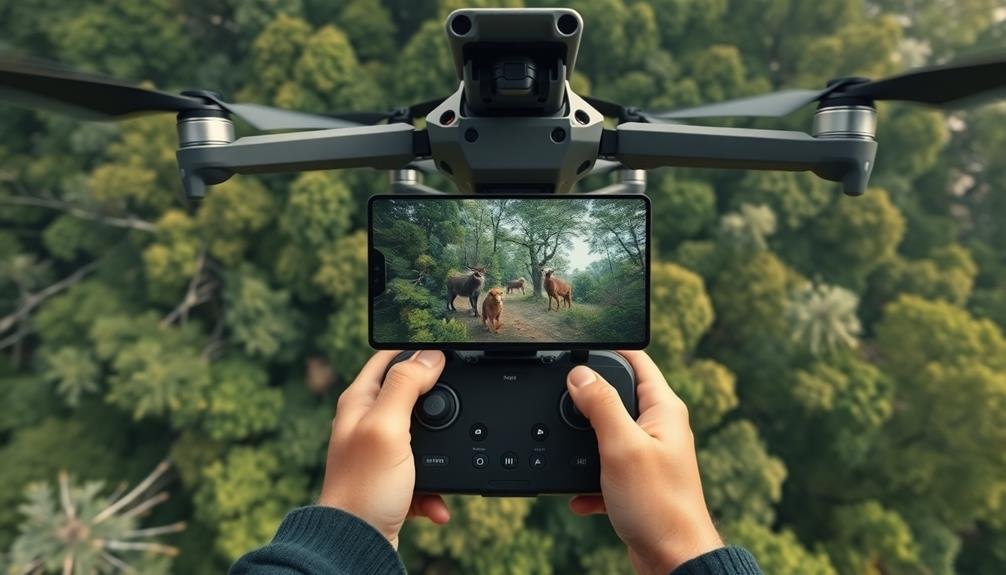
To become a proficient UAV pilot for wildlife conservation, you'll need to develop essential flying skills. Start by mastering the basics of UAV operation, including takeoff, landing, hovering, and maneuvering. Practice in various weather conditions to enhance your adaptability. Familiarize yourself with different types of drones, focusing on those commonly used in conservation efforts.
Enroll in a certified UAV training program to gain formal instruction and hands-on experience. These courses often cover flight theory, safety protocols, and regulations. Seek opportunities to practice in diverse environments, simulating the terrains you'll encounter in wildlife habitats.
Learn to operate specialized equipment like thermal cameras and GPS tracking systems. Develop your situational awareness and decision-making skills, vital for traversing challenging landscapes and responding to unexpected wildlife behavior.
Study wildlife patterns and behaviors to anticipate their movements during flights. Master data collection techniques and learn to interpret aerial imagery for conservation purposes. Stay updated on the latest UAV technologies and regulations affecting wildlife conservation.
Continuously refine your skills through regular practice and seek mentorship from experienced conservation UAV pilots to accelerate your learning and gain valuable insights.
Study Wildlife Biology Fundamentals
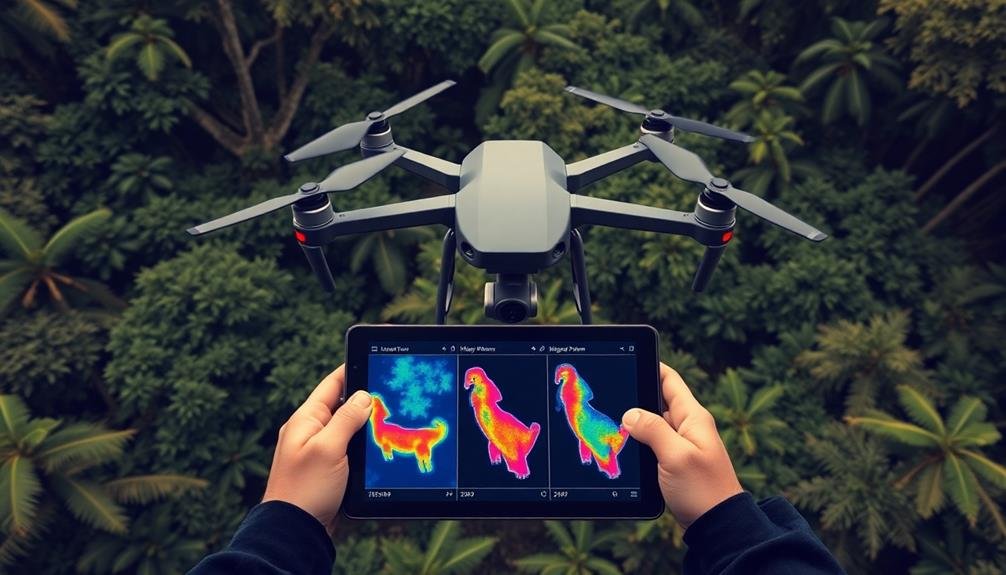
As a wildlife conservation UAV pilot, you'll need a solid foundation in wildlife biology. Start by enrolling in courses or online programs that cover the basics of ecology, animal behavior, and conservation biology. You'll want to focus on understanding ecosystems, population dynamics, and the challenges faced by various species in their natural habitats.
Familiarize yourself with the specific wildlife you'll be monitoring in your work. This may include:
- Identifying species through visual cues and behavior patterns
- Understanding migration patterns and breeding cycles
- Recognizing signs of distress or illness in animals
- Learning about habitat requirements and threats
- Studying human-wildlife conflicts and mitigation strategies
Develop a keen eye for observing and interpreting animal behavior from aerial perspectives. Practice identifying species from images and video footage, as this skill will be essential when reviewing data collected by your UAV.
Stay updated on current conservation issues and research methods by reading scientific journals and attending wildlife biology conferences. Consider volunteering or interning with wildlife organizations to gain hands-on experience and network with professionals in the field.
This combination of theoretical knowledge and practical experience will prepare you for the unique challenges of using UAVs in wildlife conservation efforts.
Master Conservation-Specific Flight Techniques
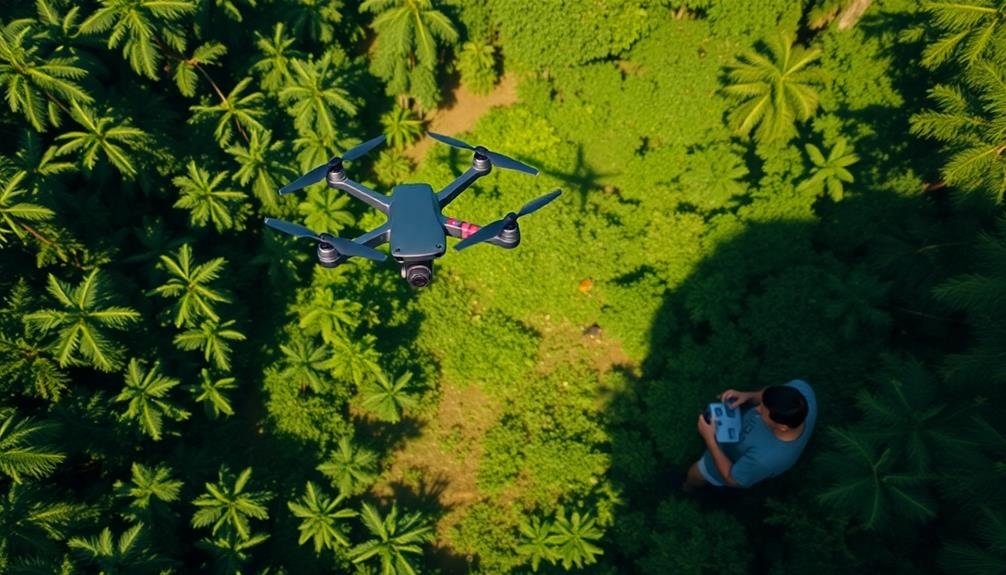
Proficiency in conservation-specific flight techniques is essential for a wildlife conservation UAV pilot. You'll need to master various flight patterns and maneuvers tailored to wildlife observation and data collection. These techniques include hovering for extended periods, flying at low altitudes, and traversing through diverse terrains.
Practice flying in different weather conditions and learn to adapt to sudden changes. Develop skills in precision flying, as you'll often need to maintain specific distances from animals to avoid disturbing them. Familiarize yourself with thermal imaging and other specialized equipment used in wildlife monitoring.
Here's a table outlining key conservation-specific flight techniques:
| Technique | Purpose |
|---|---|
| Low-altitude surveys | Population counts |
| Hovering | Behavioral studies |
| Thermal imaging flights | Nocturnal animal tracking |
| Grid pattern flights | Habitat mapping |
| Silent approach | Minimizing wildlife disturbance |
Focus on mastering these techniques through dedicated practice and simulation training. Attend workshops or courses specifically designed for conservation UAV pilots to refine your skills. Remember, your ability to execute these specialized flight maneuvers will directly impact the quality and accuracy of the data you collect for wildlife conservation efforts.
Acquire Necessary Certifications
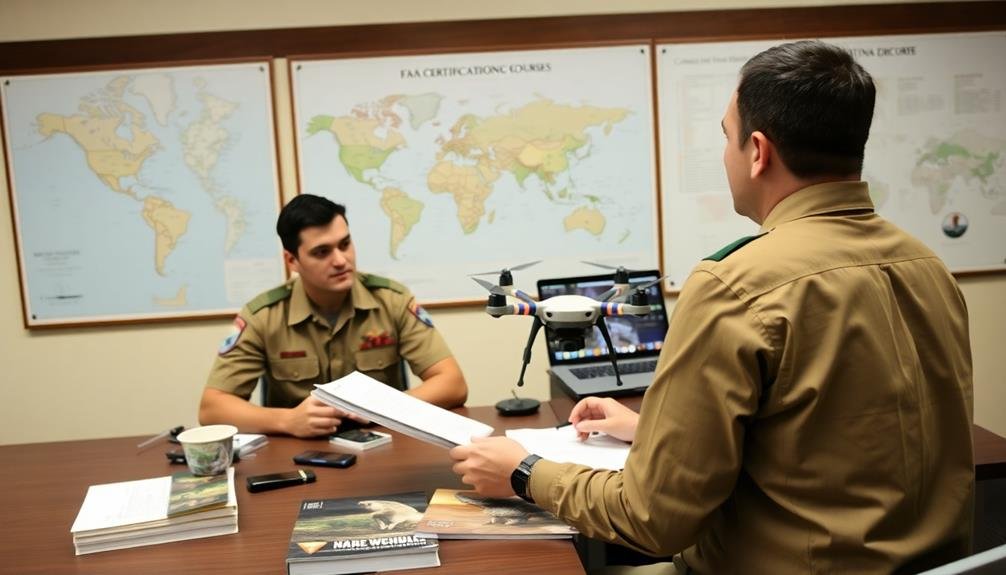
Certifications form the backbone of a professional wildlife conservation UAV pilot's credentials. You'll need to acquire specific licenses and certifications to operate legally and demonstrate your expertise. Start by obtaining your FAA Part 107 Remote Pilot Certificate, which is essential for commercial drone operations in the United States.
If you're working internationally, research the equivalent certification requirements for each country you'll be operating in.
Beyond basic drone piloting, you should pursue additional certifications relevant to wildlife conservation:
- Wildlife management certification
- Environmental science or ecology certification
- GIS and remote sensing certification
- First aid and wilderness survival certification
- Specific habitat or species-focused certifications
These additional qualifications will enhance your understanding of conservation practices and make you a more valuable asset to wildlife protection projects.
Don't forget to maintain your certifications through regular renewals and continuing education courses. Stay up-to-date with evolving regulations and best practices in both drone technology and conservation science.
Join Conservation Drone Projects
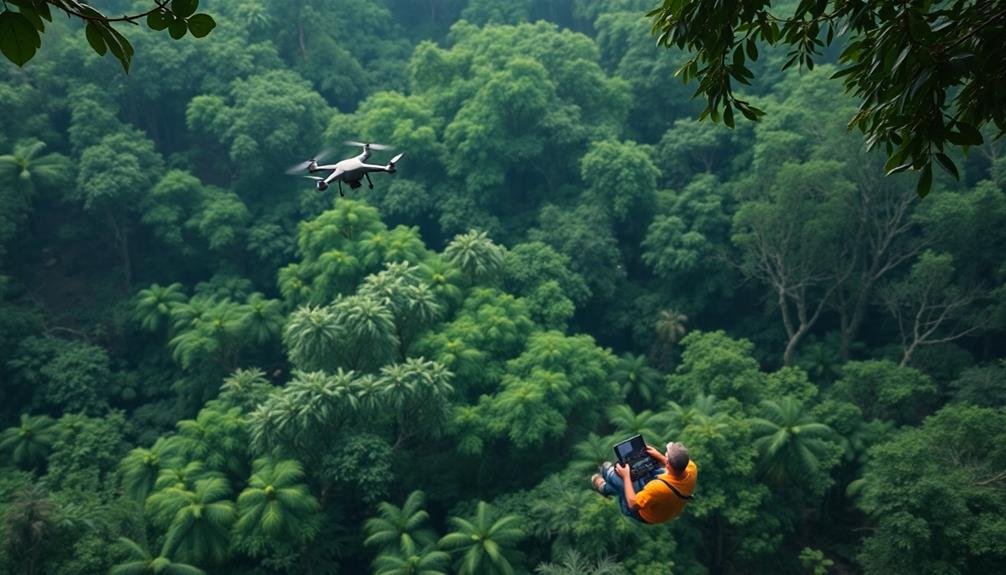
With your certifications in hand, it's time to put your skills to work in real-world conservation efforts. Start by researching organizations that use drones for wildlife conservation. Look for projects that align with your interests and expertise, such as anti-poaching initiatives, habitat mapping, or animal population surveys.
Reach out to these organizations and express your interest in joining their drone teams. Highlight your certifications, skills, and passion for conservation. Many projects welcome volunteers, so consider offering your services pro bono to gain experience. You can also apply for paid positions if you've built up a strong portfolio.
Network within the conservation community by attending conferences, workshops, and online forums. Join professional associations like the Association for Unmanned Vehicle Systems International (AUVSI) or the Wildlife Society to connect with like-minded professionals.
Consider partnering with local wildlife reserves, national parks, or research institutions to propose drone-based conservation projects. You might also explore opportunities with international organizations like the World Wildlife Fund or Conservation International, which often use drones in their global efforts to protect endangered species and habitats.
Frequently Asked Questions
What Salary Can a Wildlife Conservation UAV Pilot Expect?
You can expect a varied salary as a wildlife conservation UAV pilot. Your earnings may range from $30,000 to $80,000 annually, depending on your experience, location, and employer. Specialized skills can increase your earning potential.
Are There Age Restrictions for Becoming a Wildlife Conservation UAV Pilot?
You'll find most wildlife conservation UAV pilot positions don't have strict age restrictions. However, you'll need to be at least 18 to operate drones commercially. Some organizations might prefer candidates with more life and work experience.
How Physically Demanding Is the Job of a Wildlife Conservation UAV Pilot?
You'll find the job isn't overly physical. You'll mostly operate drones remotely, but you may need to hike or travel to remote locations. Good hand-eye coordination and the ability to sit for long periods are essential.
Can Wildlife Conservation UAV Pilots Work Internationally?
You can work internationally as a wildlife conservation UAV pilot. Many organizations operate globally, so you'll find opportunities abroad. You'll need to contemplate visa requirements, local regulations, and cultural differences when pursuing international positions.
What Career Advancement Opportunities Exist for Wildlife Conservation UAV Pilots?
You can advance to leadership roles, manage larger projects, or specialize in data analysis. You'll find opportunities to train others, develop new technologies, or shift into research positions. There's potential for consulting work or starting your own conservation business.
In Summary
You've got the roadmap to become a wildlife conservation UAV pilot. By mastering drone skills, learning about wildlife, perfecting conservation flight techniques, getting certified, and joining real projects, you're on your way to making a difference. Remember, it's a journey that requires dedication and continuous learning. As you soar above the wilderness, you'll play a vital role in protecting endangered species and habitats. Keep pushing forward – the animals are counting on you!

As educators and advocates for responsible drone use, we’re committed to sharing our knowledge and expertise with aspiring aerial photographers.




Leave a Reply